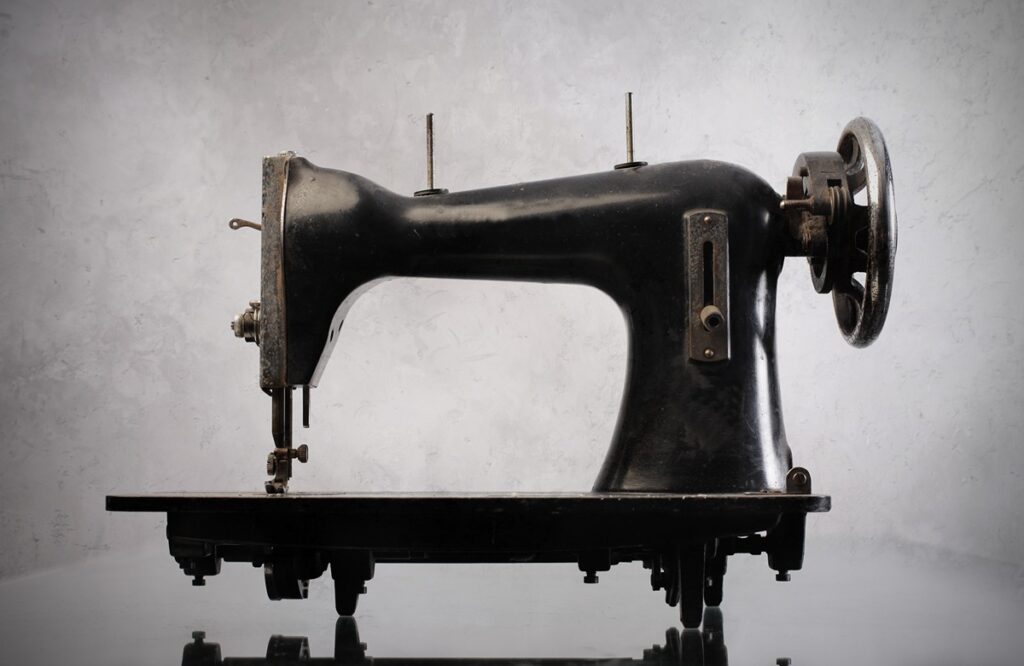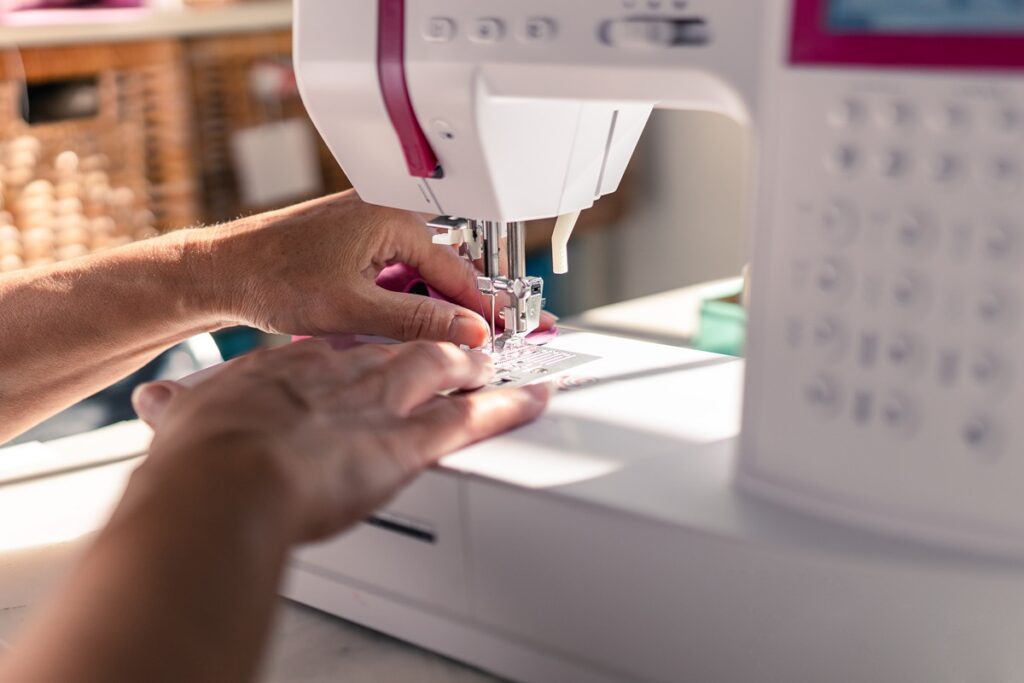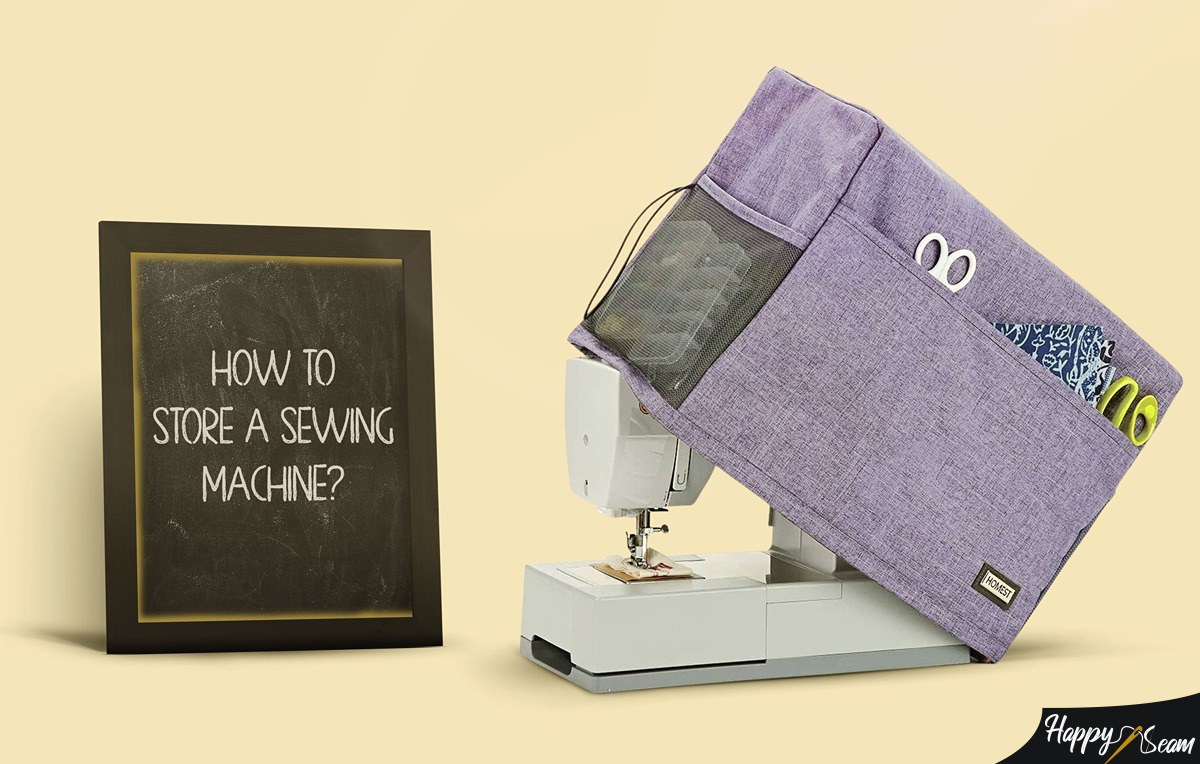Taking good and proper care of items and appliances that are valuable and enjoyable to use is very significant when you are aiming to make them durable and long-lasting. Using a sewing machine at home is a very good way of expressing your creativity and creating items on your own. However, the sewing machine may require careful maintenance and appropriate storage to retain its original practicality.
Clean your sewing machine before storing it when you are certain that it will not be used for a long time using a gentle detergent with a cloth that is made from a delicate fabric. Let it dry completely and put a specific oil on your sewing machine. The last crucial step is covering it with a protective case to avoid the build-up of dust and unnecessary moisture.
Key Takeaways
- Before putting away your sewing machine in storage, proper cleaning of the surface and its constituent parts needs to be done.
- Certain parts that constitute the sewing machine may require additional care such as the needle, the threads and the parts that require oiling.
- Regular replacement of the needle is very significant for retaining its durability and effectiveness without the possibility of damaging or breaking.
- Sewing machines are recommended to be stored in a wet-free and clean place rather than in hot and wet areas to ensure the elimination of corrosion.
Steps To Take Before Storing Your Sewing Machine

Preparing your sewing machine to be stored away for a long period of time firstly involves the process of cleaning before doing anything else. Deconstruct your sewing machine to its constituent parts and take care of each component properly. Take out the threads and the spool as well as some other accessories you happen to have attached to your sewing machine.
Then, use a gentle detergent and a cloth that you are certain is not made out of a harsh fabric and it will surely not damage the surfaces of the sewing machine. After it has been dried out completely, it is time to put oil on it that is specifically made to take care of sewing machines and eliminate the possibility of corrosion. During the storage preparation process, the needle also has to be placed downwards. Lastly, protect your sewing machine by covering it with a specifically made case to make sure that it retains its original quality when you are ready to use it again. Taking the proper steps before simply putting away your sewing machine are crucial for preserving its effective usefulness.
You can also read the meaning of ribbed fabric.
Sewing Machine Parts That Need Extra Care
It is important to take care of your sewing machine and clean it after every utilization, but especially before storing it. Certain constituents of the sewing machine call for more intensive care in comparison to others. The needle is one of these parts which requires to be restored very often and it is recommended to be replaced after every use. The constant use of the needle without replacing it can lead to it cracking or breaking, thus preventing you to continue working in crucial situations. After oiling the machine, it is supposed to work better. To prove the effectiveness of this step, try to run a piece of fabric that you do not use and need through the machine.
This test will assure you that you managed to complete all the steps in a proper manner and that your machine works even better than it did before. The threads with which you are sewing also have to be replaced before storage to avoid damage and the formation of uneven stitches when you are trying to complete your sewing projects. Although certain constituent parts of the sewing machine stand in need of extensive care, they are still easy to maintain and the overall process is not time-consuming or in need of a preservation process that may last the entire day.
You can also read a comparison between the flat-felled seam and french seam
Storage areas for your sewing machine

In order for you to achieve proper storage of your sewing machine, discovering a designated area for this purpose is very important. Rooms or areas in your house that may contain mold, excessive dust or any unnecessary dampness are not recommended for sewing machine storage. Find a particular area or room in your house that does not contain any wetness and that it is not too warm. Dampness and hot weather can definitely destroy the quality of your sewing machine and also cause corrosion. To avoid losing your sewing machine only because it was not stored in a proper area, avoid places such as the top floor of your house, a loft that you might have or an area that may be close to below ground level such as a cellar.
The most wet-free and clean area in your house that can be used to safely store your sewing machine can be the base of your dresser. Placing it in an area such as this one can ensure the containment, longevity, and quality retention of your sewing machine. Finding an area in your home that is suitable for sewing machine storage is just as important as the process of cleaning it inside and out.
You can also read whether acrylic stretch.
Frequently Asked Questions
Is it possible for the sewing machine to be stored in a garage or a shed?
Certain areas in or around your house such as garages and sheds are not favored for storage of a sewing machine because the temperatures are hard to manage and supervise.
Is it a bad idea to store a sewing machine in cold places?
Storing your sewing machine and putting it away for longer periods of time is safely done in places that are not too hot. Sewing machine storage in colder places is better than storing it in humid and warm areas which can cause corrosion.
How to store a sewing machine in long-term storage?
If you are relocating and thinking of transporting your sewing machine while it is being preserved in long-term storage, the best option would be to use a locker that controls the temperature inside. This will prevent corrosion and damage on your sewing machine.
Final Words
In order for your sewing machine to stay well-preserved after storage for a long duration, appropriate steps need to be taken such as removing dust, getting it well-oiled, and protecting it with a cover. This process is beneficial to ensure the preservation of the quality and durability of your sewing machine.
The area in which you choose to store your sewing machine can serve as a determining factor when it comes to proper care of your valuable item.
I am a proud mother of two amazing daughters, and i run our sewing & embroidery business full time. I am also a part-time writer for this blog, because i love sharing my findings and experiences!



